#cassini huygens
Text

Cassini: looking Saturn in the eye (October 11, 2006)
#astronomy#astrophotography#krakenmare#solar system#outer space#nasa#space#saturn#cassini huygens#saturn weather#2000s#2006#Saturn South Pole
323 notes
·
View notes
Text
The Earth As Seen From
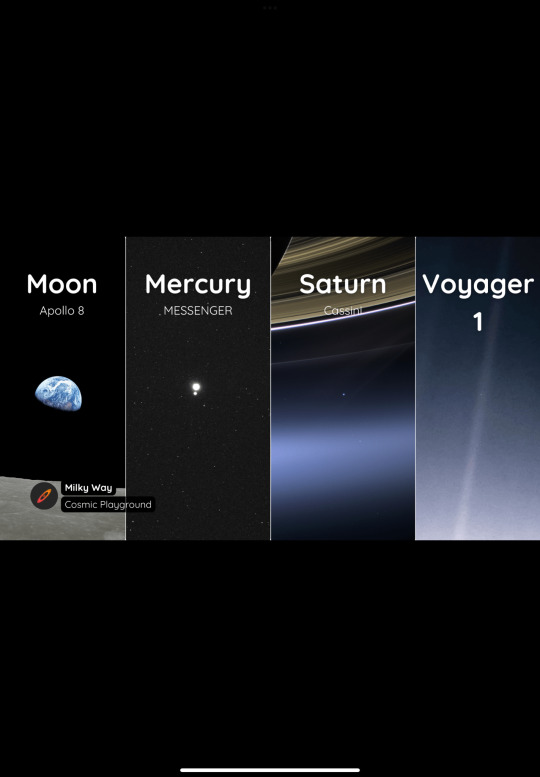
#moon#planet mercury#planet saturn#voyager 1#cassini huygens#messenger spacecraft#apollo 8#astronomy#nasa#astronomers#universe#astrophotography#nasa photos#astrophysics#outer space#nasawebb#hubble space telescope#i love astronomy#astronomy facts#astrography#astrobiology#astronauts#astronaut#astro community#astro notes#astro observations#astroblr#astro boy#planetary science#planetary nebula
240 notes
·
View notes
Text
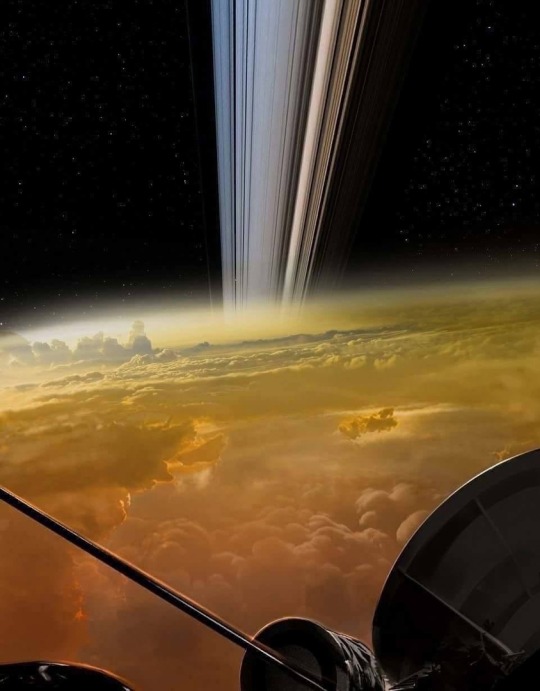
Cassini-Huygens Last Dives (Illustration).
NASA/ESA/JPL.
72 notes
·
View notes
Text
sometimes you think about cassini-huygens and starts contemplating what it may have thought in its last moments
was it afraid? how hard did it fight to send every last bit of information it could? how excruciating was the heat?
did it enjoy the winds in its last seconds?
1 note
·
View note
Text
The Final Images We Will Ever See of Saturn Stunned Me | Cassini Supercut
youtube
Incredible photos.
Images like this should be on the front pages! A crime for people not to know what is up there, what we have *flown by and photographed* in our solar system.
0 notes
Text
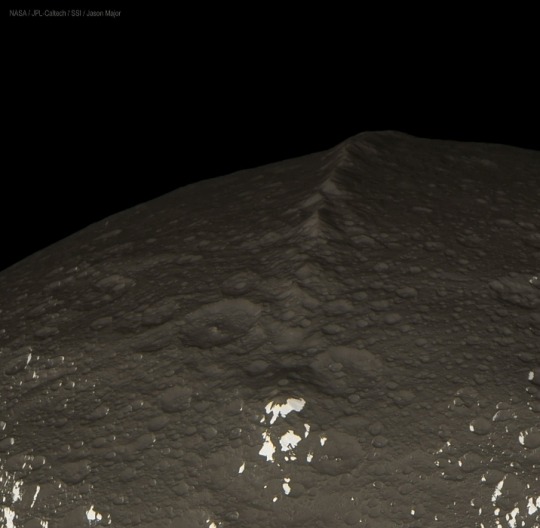

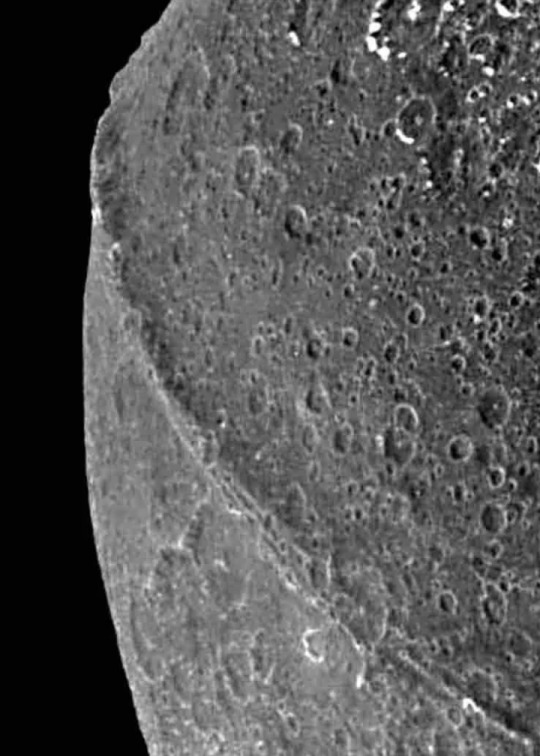

Clearest images ever taken of Equatorial Ridge on Saturn's moon Iapetus.
—
The equatorial ridge is the tallest mountain feature on Saturn's moon Iapetus.
It is 20 km (12 mi) high and is the third tallest mountain structure in the Solar System.
It runs along most of Iapetus' equator. It was discovered by the Cassini probe on 31 December 2004.
Cassini–Huygens, commonly called Cassini, was a space-research mission by NASA, the European Space Agency (ESA), and the Italian Space Agency (ASI) to send a space probe to study the planet Saturn and its system, including its rings and natural satellites.
#Saturn#Equatorial Ridge#Iapetus#moon#planet#astronomy#Cassini#Solar System#Cassini–Huygens#space probe#NASA#European Space Agency (ESA)#Italian Space Agency (ASI)
90 notes
·
View notes
Text

An experimental costume for Almaz 🪐
My inspiration was the Cassini-Huygens satellite
#sonic the hedgehog#sonic#almaz the diamond#sonic art#digital art#art#my art#drawing#sth#Cassini-Huygens#Satellite
65 notes
·
View notes
Photo

Giant Storms and High Clouds| Jpl Nasa
267 notes
·
View notes
Text
OC
Cassini & Huygens

#oc art#original character#priests#religious imagery#fantastic priests#father cassini#father huygens#priest oc#artists on tumblr#illustration
23 notes
·
View notes
Text
Cassini and Huygens are now on the workshop!!
9 notes
·
View notes
Text

It's September 1st. On this day in 1979, NASA's Pioneer 11 became the first satellite to visit 🪐 Saturn up close as it approached to within 21,000 kilometers of the planet's cloud tops. Instruments sent back a treasure trove of scientific data concerning the magnetic fields, atmospheres, and surfaces of the planet and some of its moons, along with data on interplanetary dust particles, cosmic rays, and solar wind properties. And of course Pioneer 11 sent back many awe-inspiring images. Science operations and daily telemetry ceased on 30 September 1995 when the spacecraft used up the last of its power.
Since Pioneer 11's rendezvous with Saturn, three other satellites have made the trip. NASA's twin Voyager 1 and Voyager 2 spacecraft performed flybys in 1980 and 1981. The international Cassini mission arrived in orbit in 2004 and stayed for 13 years before spectacularly plunging into the planet in September 2017. Cassini also carried the European Space Agency's Huygens Probe, which landed on Saturn's moon Titan in 2005.
Meanwhile, unless it's collided with another celestial object, Pioneer 11 is still trekking its way out of the Solar System. If aliens capture it, they'll find a plaque depicting a man, a woman, and the location of the sun and earth in the galaxy. ☮️ Peace… Jamiese of Pixoplanet
#Pixoplanet#Jamiese#NASA#Pioneer#Saturn#Voyager#Cassini#ESA#Huygens#Titan#solarsystem#MilkyWay#cosmos#universe#spaceexploration
7 notes
·
View notes
Text

Cassini: Saturn's spectacular and disorienting maze of lines and its small, icy moon Mimas (October 15, 2004)
#astronomy#astrophotography#solar system#outer space#space#nasa#thank you nasa#saturn#mimas#cassini huygens#krakenmare#saturn's rings#saturn's moons#early 2000s#2004
287 notes
·
View notes
Text
The Veil Nebula in high definition from Hubble
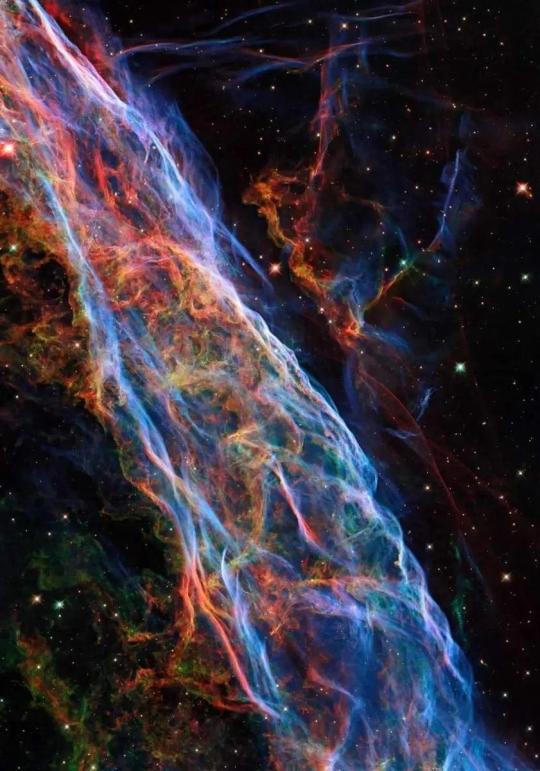
#edwin hubble#hubble space telescope#hubble#cassini huygens#james webb images#james webb space technology#astronomy#nasa#astronomers#universe#astrophotography#nasa photos#astrophysics#outer space#nasawebb#astronaut#astro community#astro notes#astro observations#astroblr#astrology observations#astrology#planetary nebula#planet earth#planetary science#space science#science#space exploration#space photography#space pics
137 notes
·
View notes
Text

im sorry what???
#this is on cassini huygens wiki page#THERE IS NO REASON TO HAVE H=PATHETIC MUSIC SHE WAS GORGEOUS SHE DID HER BEST
3 notes
·
View notes
Link
Venture into the unknown with SpaceTime Series 27 Episode 50, as we embark on an interplanetary adventure that transcends the boundaries of our earthly skies. NASA confirms its bold mission to dispatch a pioneering rotocopter to the enigmatic Saturnian moon, Titan. The Dragonfly mission is set to soar through Titan's dense atmosphere, exploring its organically rich landscapes in search of prebiotic chemical processes that mirror the early Earth. With a launch date set for July 2028 and a budget of $3.35 billion, Dragonfly promises to revolutionize our understanding of this distant, methane-drenched world.
As we bid a heartfelt farewell to the Mars Ingenuity helicopter, we celebrate its unprecedented achievements on the Red Planet. Despite a hard landing ending its aerial escapades, Ingenuity's legacy endures as it transitions to a stationary science platform, continuing to collect invaluable data for future Martian exploration.
Amidst escalating global tensions, South Korea asserts its space prowess with the launch of a new spy satellite, keeping a vigilant eye on its northern neighbor. This strategic move marks a significant step in the intensifying space race on the Korean Peninsula, as nations jockey for celestial dominance and surveillance capabilities.
Join us as we also delve into the Science Report, confronting the harsh realities of climate change with another bleaching event on the Great Barrier Reef and examining the global hotspots of cybercrime. Plus, we'll explore the latest in technology, from AI-enhanced chips to the ongoing evolution of smartphone supremacy.
For the full cosmic journey, visit our website at https://spacetimewithstuartgary.com and support the show at https://www.spreaker.com/show/spacetime. Discover the universe's wonders with us on SpaceTime.
This week's episode is brought to you by NordPass. Navigate the digital universe with confidence using a password manager you can trust. Secure your cosmic exploration at www.bitesz.com/nordpass.
Listen to SpaceTime on your favorite podcast app and follow us on Twitter @stuartgary, Instagram, YouTube, and Facebook.
Become a supporter of this podcast: https://www.spreaker.com/podcast/spacetime-with-stuart-gary--2458531/support.
This episode is brought to you with the support of NordPass....the password manger we use and the one need to have in your life to make onlne easier. Check out our great offer by visiting www.bitesz.com/nordpass
#atmosphere#cassini-huygens#dragonfly#exploration#helicopter#ingenuity#korea#mars#mission#moons#nasa#north#prebiotic#satellite#saturn's#saturnian#south#spy#surveillance#titan
0 notes
Text
New (Named) Crater on Saturn's Moon Titan!
Ihi Crater
The crater has been there for a while, but an official name has just been adopted on March 21, 2024 by the IAU. The crater is named Ihi, after a Tahitian goddess of wisdom and learning
The crater is located between -7.40° to -8.29° latitude and 164.75° and 165.46° longitude on the moon's surface

Image: Source


The images above were recovered from the Cassini RADAR images taken of the spot on April 30, 2006 (T13-S01). This was done via pydar—a Python tool I help develop
#titan#saturn#saturn moon#astronomy#research highlight#pydar#python project#python#nasa#github#ihi#jpl#esa#isa#jet propulsion laboratory#Cassini-Huygens
1 note
·
View note